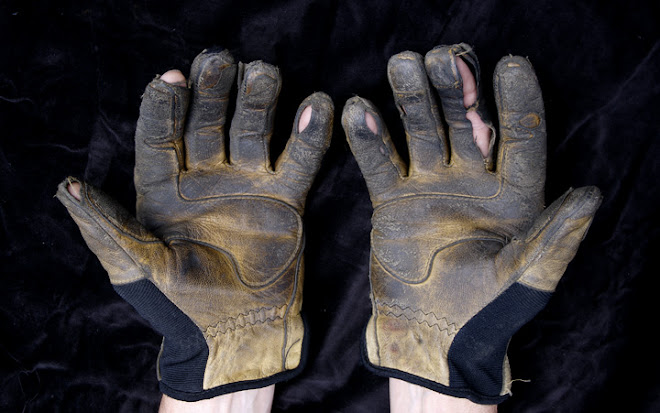
Yep, it's the greenest lawn in LA -- not due to the drought-breaking rains this past winter, but because it's made of plastic. There's no water required (or gardener, for that matter) with this, the very latest in high-tech Astroturf...
If (like me) you are now unemployed until the phone decides to ring again, then you might have a little time on your hands. This is not all bad, because I've stumbled across some excellent ways to fritter away those idle hours.
This week's podcast of "The Business" on KCRW is terrific, featuring a lively, candid interview with Kevin Reilly (head of programming at Fox), discussing the perilous process of navigating pilot season from script approval all the way through the upfronts. Reilly reveals much about life in the executive suites where the shots are called, and explains what factors can influence the seemingly fickle decisions to green light or cancel a show -- or put an actor back on Extra Strength Prozac by jerking him/her off a pilot in favor of another pretty face. Opportunities to hear such stories straight from the executive horse's mouth are rare -- and this is a good one. As a bonus, the podcast offers a well-done, very funny Utube spoof of Reilly made for the 2005 upfronts. It might be the best three minutes of your day -- but stick around to listen to Mr. Reilly.* You just might learn something -- I did.
Kurt Sutter (“Sons of Anarchy” showrunner, whose blog covers a wide variety of subjects) recently wrote about the ongoing death spiral of small budget features and broadcast television as creative mediums, and the rise of cable to fill the resulting void. His insider perspective gives this post some serious throw-weight. It's an interesting, thoughtful read for anyone concerned with our industry and the medium.
I'm a big fan of Rob Long’s "Martini Shot" commentaries on KCRW, but a recent offering -- a wry look at the casting process for television titled "What's that Smell?" – is a highly entertaining clinic on timing and the construction of a short piece of humorous writing, among other things. There is, however, an unintentional cautionary coda -- read the comments after listening and you’ll see what I mean.
It's not easy to be funny these days without offending somebody out there.
For those who view becoming a director as the Holy Grail of Hollywood, there are many routes to achieve this goal. Countless writers have leveraged their screenwriting talent into the director's chair, but I’ve also seen PA’s, gaffers, and cameramen work their way up to direct television and feature films. On “The Treatment” (KCRW again), Elvis Mitchell recently conducted two fascinating interviews with up-and-coming directors – Nash Edgerton, a successful stunt man who made the leap to directing with The Square, and Mathew Vaughn (Stardust, Kick Ass), who left his usual producing duties to direct an excellent, very stylish first feature called Layer Cake.
These are terrific interviews, each half an hour long. If becoming a director is your goal – or if you’re just interested in how things sometimes work out for the best in this crazy business -- you should tune in. It can be useful to realize just how many routes there are to get where you want to go.
Granted, these two were already established Industry professionals, but that's pretty much how it works -- the chances that an unknown kid will wander out of a corn field clutching a script so good that Hollywood will allow him/her to direct the movie are on the far side of slim and none. Nobody gets to direct in his first week in the biz, but what these interviews demonstrate is that if you pay your dues, learn all you can, and acquire some serious Industry skills, good things can happen.
Which means, inshallah, they can happen to you.
* Reilly, it turns out, is the unnamed exec who played a key role in this post a while back...







